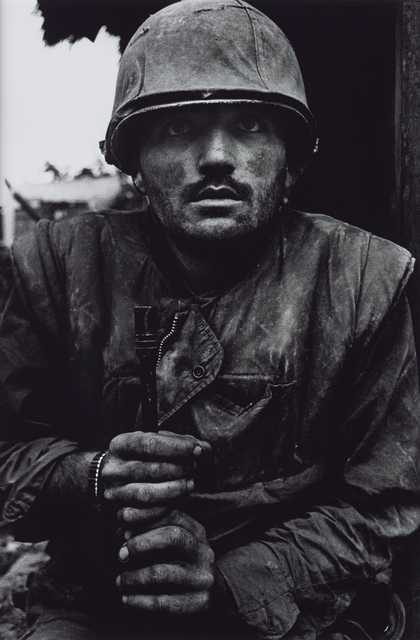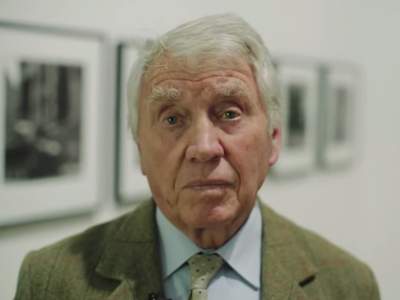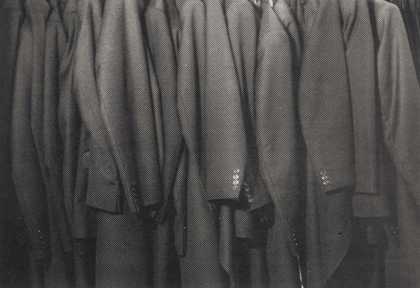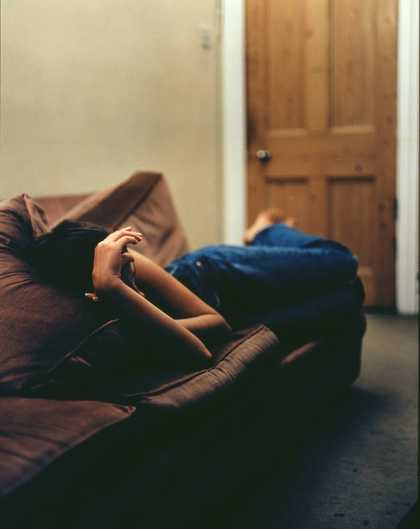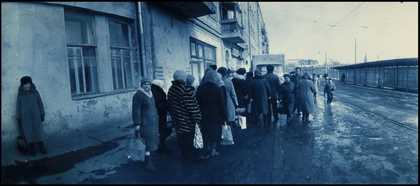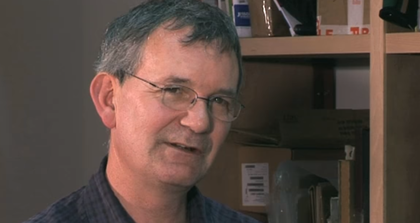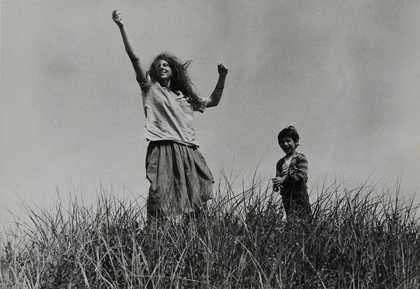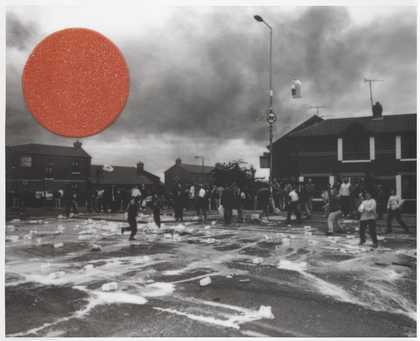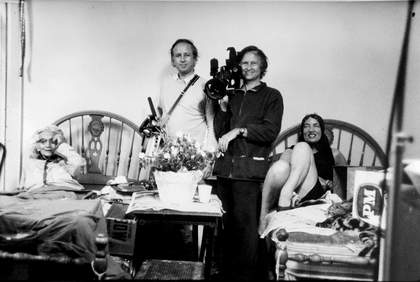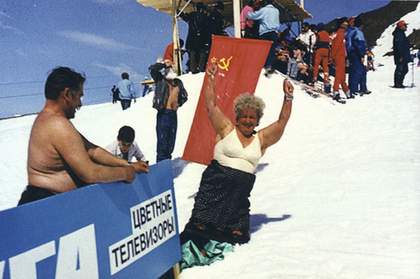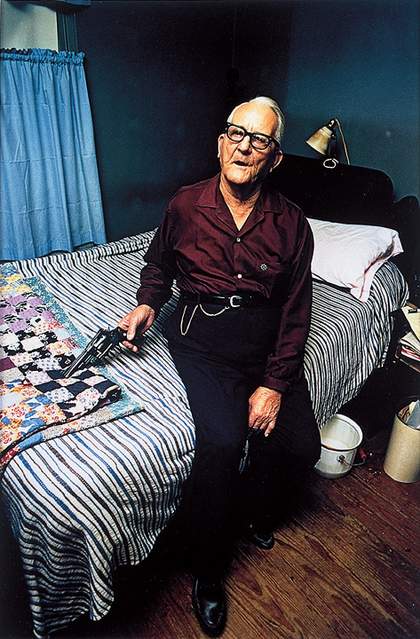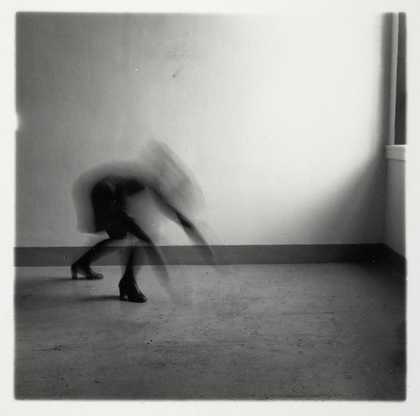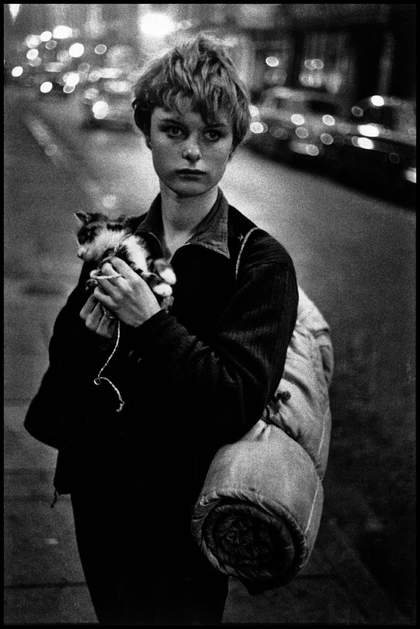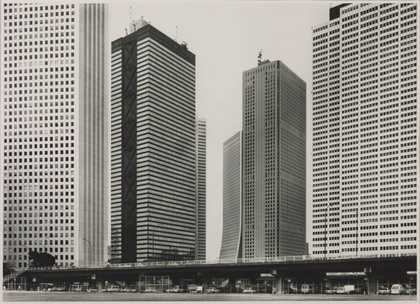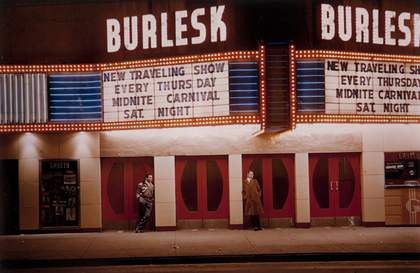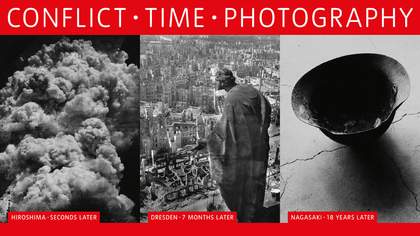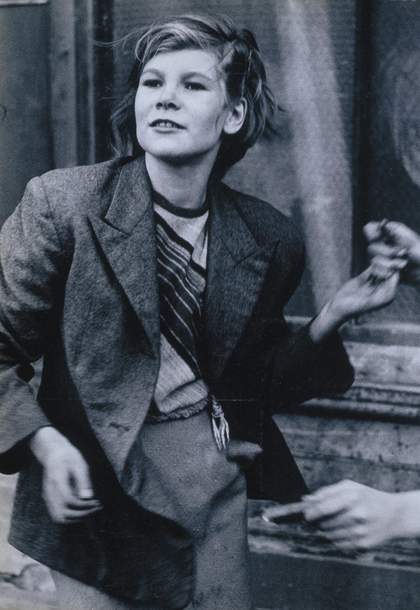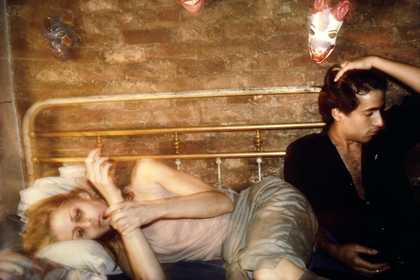
Nan Goldin
Greer and Robert on the bed, NYC (1982)
Tate
Until the mid-twentieth century, documentary photography was a vital way of bearing witness to world events: from shoot-from-the-hip photographs of the Spanish Civil War by Robert Capa to the considered portraits of poor farmers by Dorothea Lange.
social documentary photography
During this period the tradition of documentary photography was reinvented. Artists began to see the camera as a tool for social change, using it to shed light on injustice, inequality and the sidelined aspects of society. However, social documentary photography is often a subjective art and not all photographers in this category intend their images to aid the bettering of society.
Lisette Model’s close-up views of people on the streets of Paris, New York and the French Riviera were often taken without the subjects’ awareness or permission. From 1949 onwards, Robert Frank started to take pictures which reflected his search for artistic freedom, shooting stories which revolutionised the expressive potential of the medium.
Contemporary artists
With the rise of television and digital technology there was less demand for published photography and it began to go into decline but has since found a new audience in art galleries and museums. Putting these works in a gallery setting places the work at the centre of a debate surrounding the power of photography and the photographer’s motivations. Their work raises questions of the documentary role of the photograph today and offers alternative ways of seeing, recording and understanding the events and situations that shape the world in which we live.

